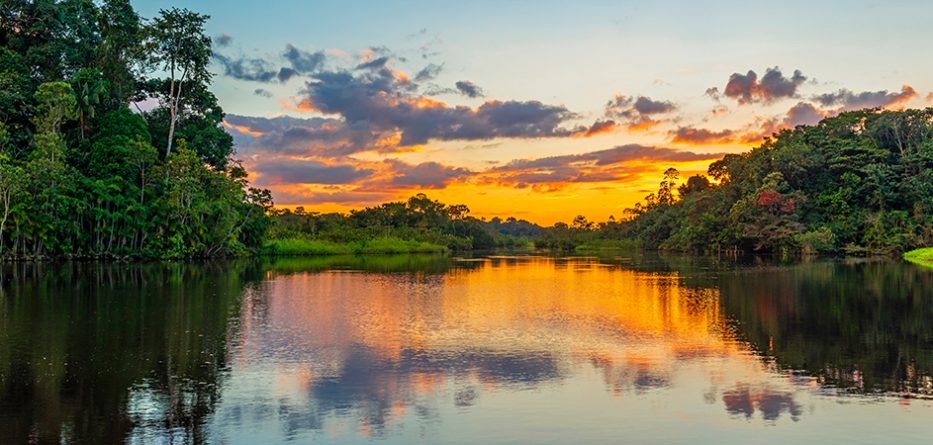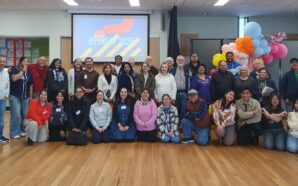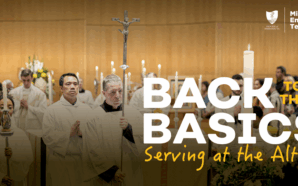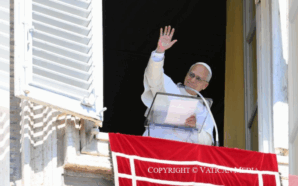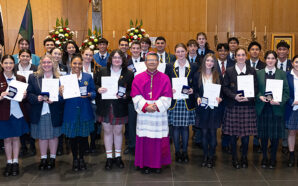New Paths
Shocked by stories of atrocities against Amazonian natives at the height of the early-twentieth-century rubber boom, Pope Pius X’s first encyclical in 1912 was called Lacrimabili statu indorum (“On the deplorable state of the Indians”). Pius asked the church to make use of every means “to deliver the Indians, where their need is greatest, from the slavery of Satan and of wicked men” and added the hope that, since missionaries had long labored to spread the Gospel in the region, “at length a fair harvest of Christian kindness shall spring forth from their great labors and bear abundant fruit.”
Pius might have been a little nonplussed by some of the language in the working document for October’s synod on Amazonia, with its warnings of “neo-extractivism” and the “technocratic paradigm” and its call for “inculturation” and “interculturality.” But he would surely see in it the “fair harvest” he hoped for: a massive effort by the Catholic Church in the region to rethink and boost its pastoral presence there, first by listening carefully to the Amazonian peoples’ needs and desires, and second by being willing to “reconfigure” itself, even to the point of ordaining elders in remote areas, in order to enable a “Samaritan Church,” a “Church with an Amazonian face” that is with and of the people, that stands with them to defend their lives and their lands.
While the headlines following the document’s release have focused, inevitably, on the possibility that the “Vatican will allow married priests in the Amazon,” the bigger story is the ecclesiological reimagining that allows such a possibility to be considered, one that sets out purposefully to hear from the periphery.
The synod’s instrumentum laboris, “Amazonia: new paths for the Church and for an integral ecology,” draws on a huge listening exercise conducted by the church’s pan-Amazonian network, REPAM, following Pope Francis’s announcement of the synod back in 2017 and his visit to the Peruvian Amazon in January 2018. Since then, according to REPAM’s executive secretary Mauricio López, there have been at least 260 “listening moments” with communities spread across the nine nations (and seven bishops’ conferences) that include the Amazon basin within their borders.
On a recent visit to London, López explained what the consultation involved: “territorial assemblies,” meetings of between 80 and 200 people, drawn from 150 indigenous nationalities; surveys and discussions around 40 “thematic forums”; and countless meetings with leaders and pastoral agents. López, a Mexican layman who lives in Ecuador, reckons that in all some 64,000 people were consulted, including almost all the bishops in Amazonia. It may be only a fraction of the total number of indigenous people in the area—between 3 and 20 million, depending on your definition—but by the Catholic Church’s standards of consultation, it is remarkable.
In any event, more listening would only have reinforced the messages that have come through loud and clear. What the people of God in the Amazon want and need is the church: its presence, its sacraments, its prophetic witness. It needs the church to be present 24/7, not just to pass through once a year. In an age of secularization, when Catholics are finding their way to the exit doors, this is a message that cannot be ignored.
The scarcity of the sacraments is a problem the bishops have long been grappling with. “This is about the church’s presence,” López tells me, “but it’s also about keeping the ministry of the Word and the Eucharist together. Without the Eucharist, what makes us different from evangelicals?” The instrumentum laboris refers only to “the vertiginous growth of new evangelical Churches of Pentecostal origin, especially in the peripheries” without further comment, but it is one of the synod’s big underlying concerns: that the people of the Amazon drift away from the church because it fails to be present. When there are no sacraments to accompany birth, marriage, and death, no Confession or Eucharist, how is the church Catholic? Little wonder that priests visiting communities once a year often find they have been “converted” by Pentecostals.
Expect plenty of such stories from the Amazonian bishops at October’s synod, along with vivid testimony of the gut-wrenching destruction of lives, livelihoods and the ecosystem on which they depend. The church’s presence is a life-or-death matter: Who else, globally, can stand up for the Amazonian peoples? Yet the sheer distances involved and the lack of infrastructure mean that this “grave pastoral problem,” as the instrumentumputs it, “cannot be resolved with mechanical and technological means” alone. Nor will there be a sudden influx of clergy from the outside, even if that were compatible with inculturation. The document, which was prepared in Spanish, talks of moving from a pastoral de visita to a pastoral de presencia. But how? The answer is by bringing to birth what is already growing in the womb of the Amazon: an indigenous church.
This “Church with an Amazonian face” will require, says the instrumentum laboris, “reconfiguring the local Church in all its expressions: ministries, liturgy, sacraments, theology and social services.” In liturgy it means local dance and music and vestments “in communion with nature and with the community.” It means recognizing and validating popular religiosity (devotions, shrines, pilgrimages, and so on). But mostly it means looking again at what is already there. The people of God is already present and active locally 24/7; there is already a pastoral de presencia, a church that “accompanies and is present through ministries that stem from [the] inhabitants.” It’s not just a question of creating new ministries (especially for women), says the instrumentum, but of “reevaluating what is already being done.”
The document calls for the synod to note that strong structures of leadership already exist among the Amazonian peoples, together with high levels of collaboration and participation (“which is why clericalism, in its various manifestations, is unacceptable,” the document laconically notes). Rather than deprive communities of the Eucharist, “the criteria for selecting and training ministers authorized to celebrate it” should be reviewed. Native vocations need to be encouraged. The kinds of “official ministry” that can be exercised by women should be identified, “keeping in mind the central role that they play in the Amazonian Church,” says the instrumentum, which calls for the church to “recover the space that Jesus gave women.” The leadership of lay people, “subjects of the Church that goes out,” needs to be recognized, and an “integral formation” offered them so they can be “credible animators.” And while it recognizes that celibacy is a gift for the church, the instrumentum calls for “a study of the possibility of priestly ordination for elders, preferably indigeneous, who are respected and accepted by the community, even if they already have an established, stable family.”
No more detail is given, but it is enough. Pope Francis has already spoken of the ideas of emeritus Bishop Fritz Lobinger of South Africa, who has long proposed special faculties of ordination being given to viri probati, local elders, just for that place. This would be a somewhat reduced version of ordination: of the three munera (gifts or powers) conferred by the priesthood, it would be only the munus santificandi, the power to sanctify, not the powers to govern (regendi) or teach (docendi), that would be bestowed on these local elders by the bishop. But the new document does not reference Lobinger, avoids the term viri probati, and leaves open the question. This allows the Brazilian bishops to propose the ideas of theologian José de Almeida, whose book Procuram-se padres (“Fathers needed”) digs deep into this issue from every angle: theological, spiritual, pastoral, and canonical.
The details will need to be spelt out eventually, but Francis does not want to open a theological debate on priestly celibacy of the sort the German bishops are itching to have; that would likely take the focus away from the people of the Amazon and create another football for liberals and conservatives in the rich North to kick back and forth. Cardinal Cláudio Hummes, the emeritus archbishop of São Paolo who will be relator, or chair, of the October synod, has already complained that “too much concern is given to the profile of the ordained ministry, putting it before the community that receives it.” It should be the other way around, he says: “the community is not there for its minister, but the minister is there for the community.”
The headlines are already full of talk of reform of the priesthood, but the pope has already made clear, on the return flight from Panama in January, that priestly celibacy per se is not up for discussion. What is proposed in the synod would be a special faculty granted in what he called “very far places” such as the Pacific Islands or the Amazon. At some point prior to the synod, Cardinal Walter Kasper will be getting together with other experts to prepare a kind of theological briefing paper for the synod, which may or not be released. That way, the synod can avoid getting bogged down in the abstract question of priestly celibacy, and keep the focus on the Amazonian people themselves as they face down multiple threats: the murder of their leaders, deforestation, drug trafficking, water contamination, and the assaults on their way of life.
Yet there is little doubt that if the synod reaches a calm consensus behind the proposal to ordain elders in order to promote regular access to the sacraments—which is very likely—Francis will not refuse. As he made clear in his document last year on the synod process, Episcopalis communio, he will see it as the Holy Spirit pointing the way forward—at least for remote peripheries like the Amazon.
And thereafter? This raises the fascinating question of how the center will relate to the periphery at the synod. Francis told the REPAM team preparing the synod to keep in mind three priorities. They should maintain their focus on Amazonia and its concrete needs, looking on the area with the gaze of faith. They should allow the periphery to shape the center but without becoming the center. And they should be open to the new things the Spirit is trying to tell the church.
By definition, having a synod on Amazonia is to turn a periphery—a place of terrible poverty and vulnerability, Latin America’s backyard—into a center, if only the center of attention and if only temporarily. The Amazon is a territory rather than a region: there have been synods before on regions (the Middle East, Africa, and so on), but this is the first time that a territory has been singled out in this way. The bishops of that territory will be the main voting body at the synod, together with a much smaller group of representatives of the world’s episcopal regions (Europe, Asia, etc.), along with some Roman curial heads. The others will be non-voting auditors and invited experts, including representatives of the indigenous communities.
The Amazon’s bishops and their people will have, in other words, not just a vehicle for bringing about change for their area, but a universal platform in the glare of the universal media. For three weeks the world will hear directly from the heart of the Amazon, and the church in the rich center will have a master class in integral ecology. They will hear, in the words of the Colombian Guaviare people quoted in the instrumentum, that “that the land has blood and is bleeding, the multinationals have cut the veins of our mother earth.”
Catholics all over the world will learn that Amazonia is not just a geographical area but a theological locus, the place where the world faces a crossroads between technocracy and integral ecology. They will see how Amazonians are caught between powerful extractivist industries on the one hand and a bien-pensant ecological conservationism that overlooks them on the other. They will see how Catholics in the Amazon are looking to the church to use its influence and networks to protect them from both international “development” projects and corrupt local officials. Perhaps they will come to see, as the people of God in the rainforest believe, that the synod is a kairós, a moment proving that the Lord has heard their cry as once he heard the cry of Israel in Egypt.
The synod will focus resolutely on the Amazon, but if its vision of reform does not have repercussions for the rest of the church, then, says López, an important opportunity will have been wasted—an opportunity to show how the church’s peripheries can shape its center. But it seems unlikely Pope Francis will let that happen.
By Dr Austen Ivereign, reproduced with the permission of Commonweal Magazine.
The Special Assembly of the Synod of Bishops for the Pan-Amazon Region will be held in the Vatican from 6 to 27 October. For more information, click here.




